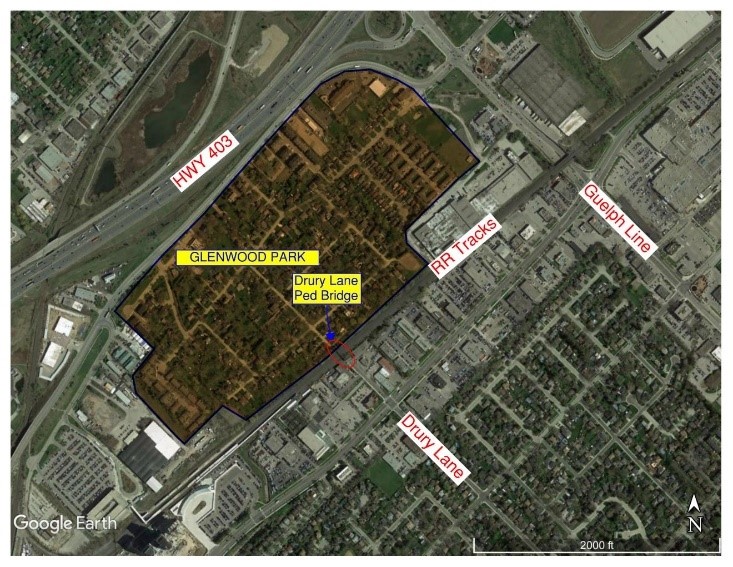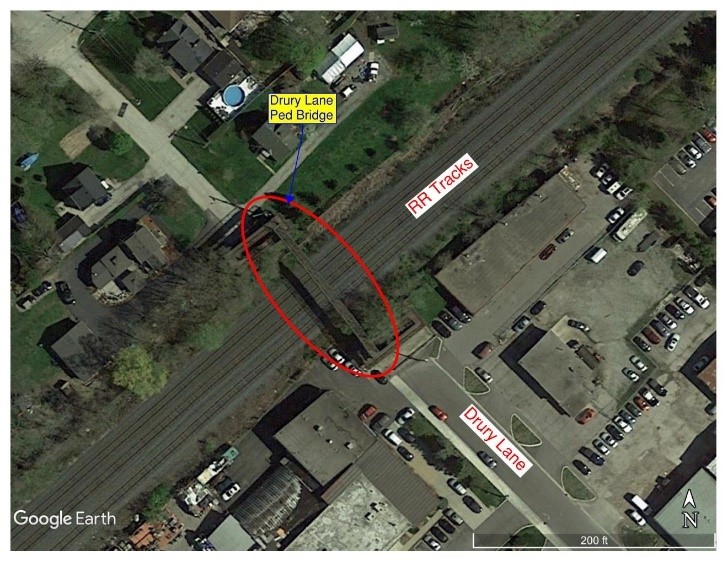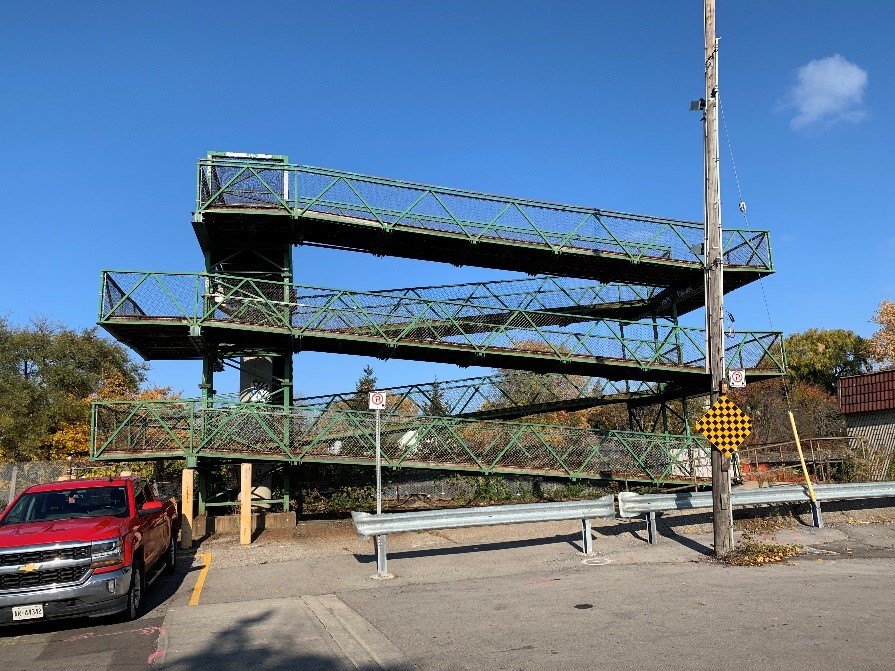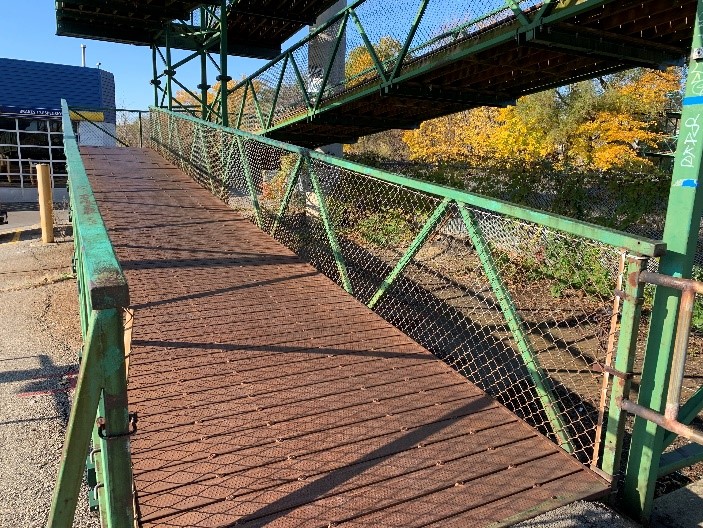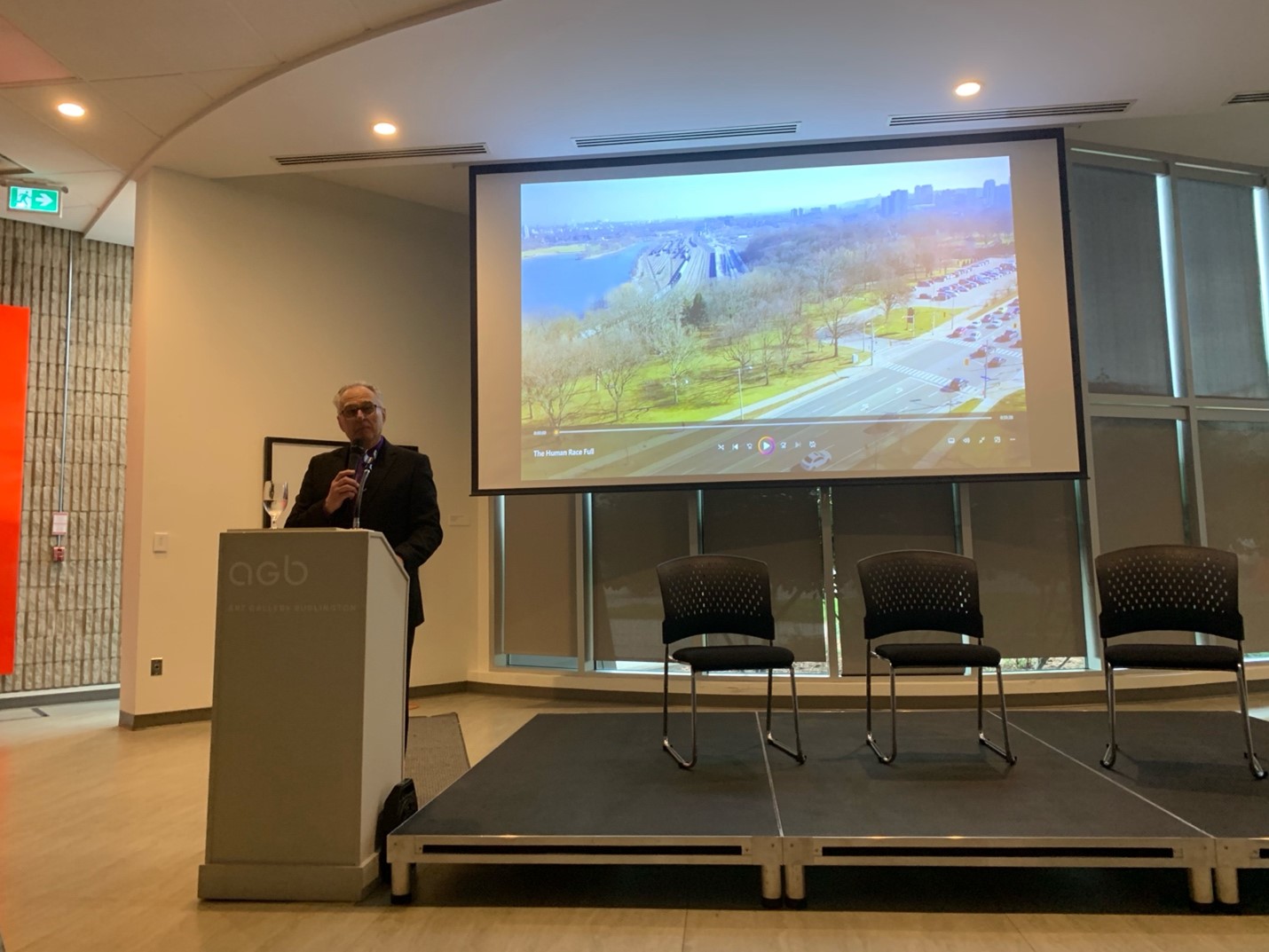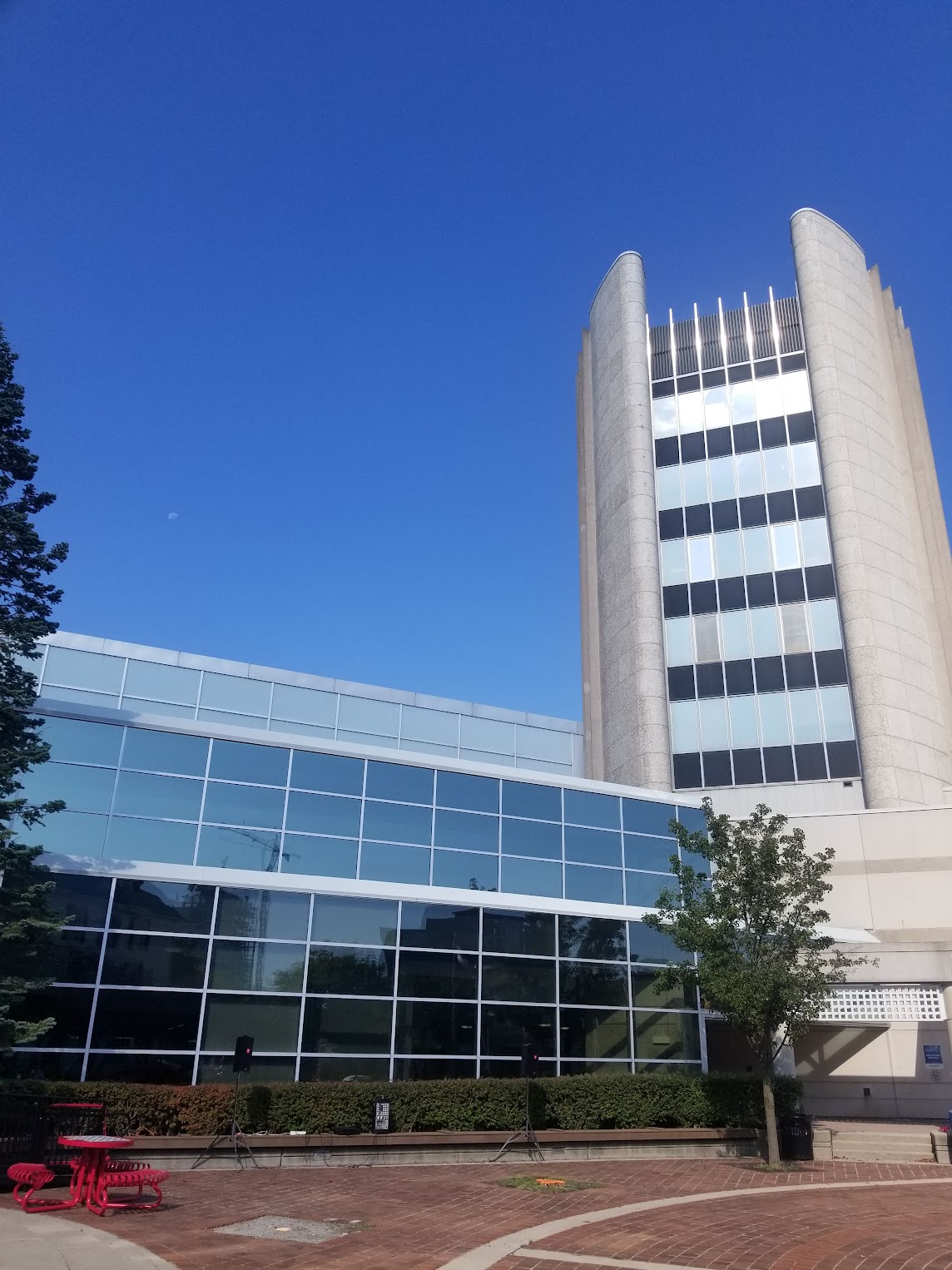Although railroads are the most efficient mode of transportation for moving goods and people across long distances, in order for them to co-exist with urban populations, we need a lot of bridges. Railroads tend to bisect towns and neighborhoods, generating a lot of at-grade crossings (where vehicles and pedestrians drive and walk across tracks). As the population grows and the crossings get busier, the city turns these crossings into grade separations (bridges) where they no longer need to manage high-risk interactions between trains and the public. Train vs. car doesn’t just result in a fender bender!
The train tracks through Burlington are owned by Canadian National and Metrolinx. There are multiple railroad bridges and overpasses in Burlington working hard to keep people off the tracks, one of which is a small pedestrian bridge at the north end of Drury Lane. This bridge connects the quiet Greenwood Park neighborhood north of the tracks with the busy commercial Fairview Street (see Figure 1).
The bridge was built by the City of Burlington in 1972 — a light structural steel truss spanning about 34 m over three very active tracks, carrying GO trains, VIA Rail, and freight traffic. The bridge was assembled on the ground and flown onto its abutments by crane in one piece. There are ramps at both ends of the bridge for pedestrians and cyclists (see Figure 2).
The ramp allows cyclists to ride their bikes across the tracks without dismounting (please dismount — it’s safer!). Almost all pedestrian bridges are encased in a screening to prevent passersby from throwing objects onto the tracks below (see Figure 3).
The bridge has a very simple lightweight deck (the surface pedestrians walk on) made of wood spandrels (the main supporting component under the deck) covered with metal decking plates (see Figure 4).
The bridge underwent some major retrofitting in 2012 after it was deemed unsafe for public use. The repairs included a reinforcement of all the horizontal members supporting the decking (see Figure 5) and a complete deck replacement (and probably a tenth coat of paint).
All structures that are built around railroad tracks have to remain outside the dynamic envelope of the trains. This is a specific predetermined space that the train occupies when travelling on the rails and in which the train must fit — including all cargo (see Figure 6). The trains are not allowed to be taller or wider. Consequently, everything built along or over the tracks must remain outside the envelope in order to not get hit by the train. The current bridge has a clearance of 6.82 m above the rails, which barely exceeds the envelope.
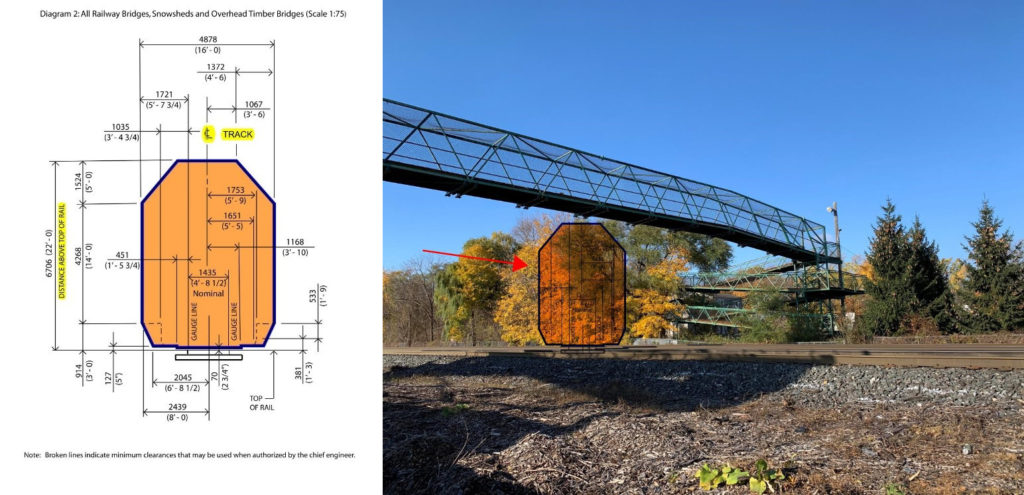
Metrolinx’s long-term GO expansion project, which aims to electrify the entire Lakeshore West corridor (connecting Burlington to downtown Toronto), will most likely have a taller dynamic envelope because of the overhead catenary system (OCS — the electric wires overhead that power the electric trains). This means that many of the existing structures along the corridor will have to be raised, including our beloved Drury Lane pedestrian bridge. Metrolinx is working with the City of Burlington to replace it with an upgraded bridge (see Figure 7) with a targeted clearance of 7.4 m above the rails in the years to come to facilitate their expansion, eventually providing electrified train service on these tracks.
Burlington has exceptional access to train service for public and freight transportation, as well as a great history of being part of how the regions stay connected. Our relationship with these rails requires well-maintained infrastructure and good public awareness of what it takes to coexist. Enjoy the trains. Explore the bridges. And please, be safe, stay off the rails!
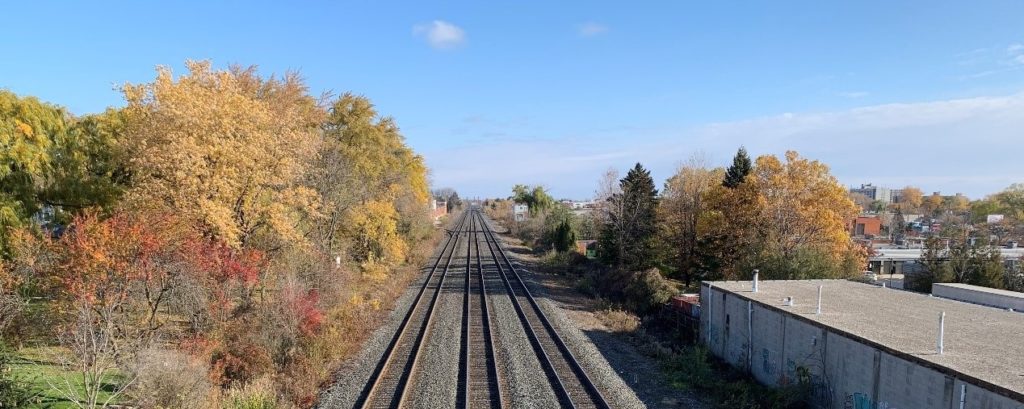
Thank you to Kim for suggesting the Drury Lane pedestrian bridge to Eric to write about!
Have you seen an interesting building or piece of infrastructure in or around Burlington that you’d like Eric Chiasson, your personal engineer, to write about?
Send us your suggestions, comments, or questions to articles@local-news.ca and we’ll see what Eric can find out!
Sources:
Metrolinx. Upgrades Coming to the Drury Lane Pedestrian Bridge! Url:
https://www.metrolinx.com/en/greaterregion/projects/drury-lane-pedestrian-bridge.aspx (accessed Nov. 15, 2021).
Metrolinx News. April 12, 2019. A Bridge So Near – Planned Burlington Pedestrian Crossing Will Span GO Tracks As Well As Decades of Use. Url:
https://blog.metrolinx.com/2019/04/12/a-bridge-so-near-planned-burlington-pedestrian-crossing-will-span-go-tracks-as-well-as-decades-of-use/ (accessed Nov. 15, 2021).
For more information on the author: https://www.linkedin.com/in/eric-chiasson-10601082


